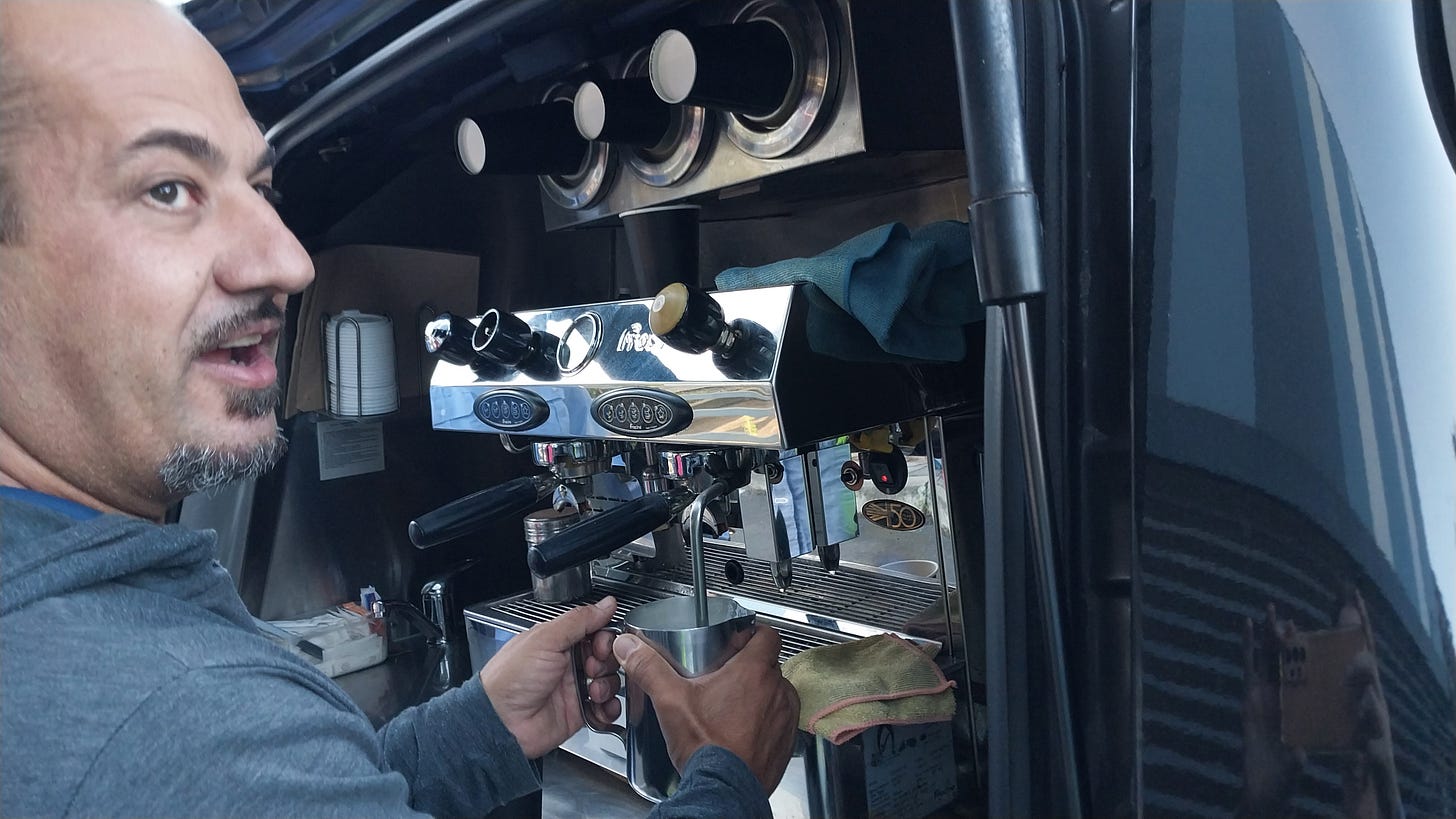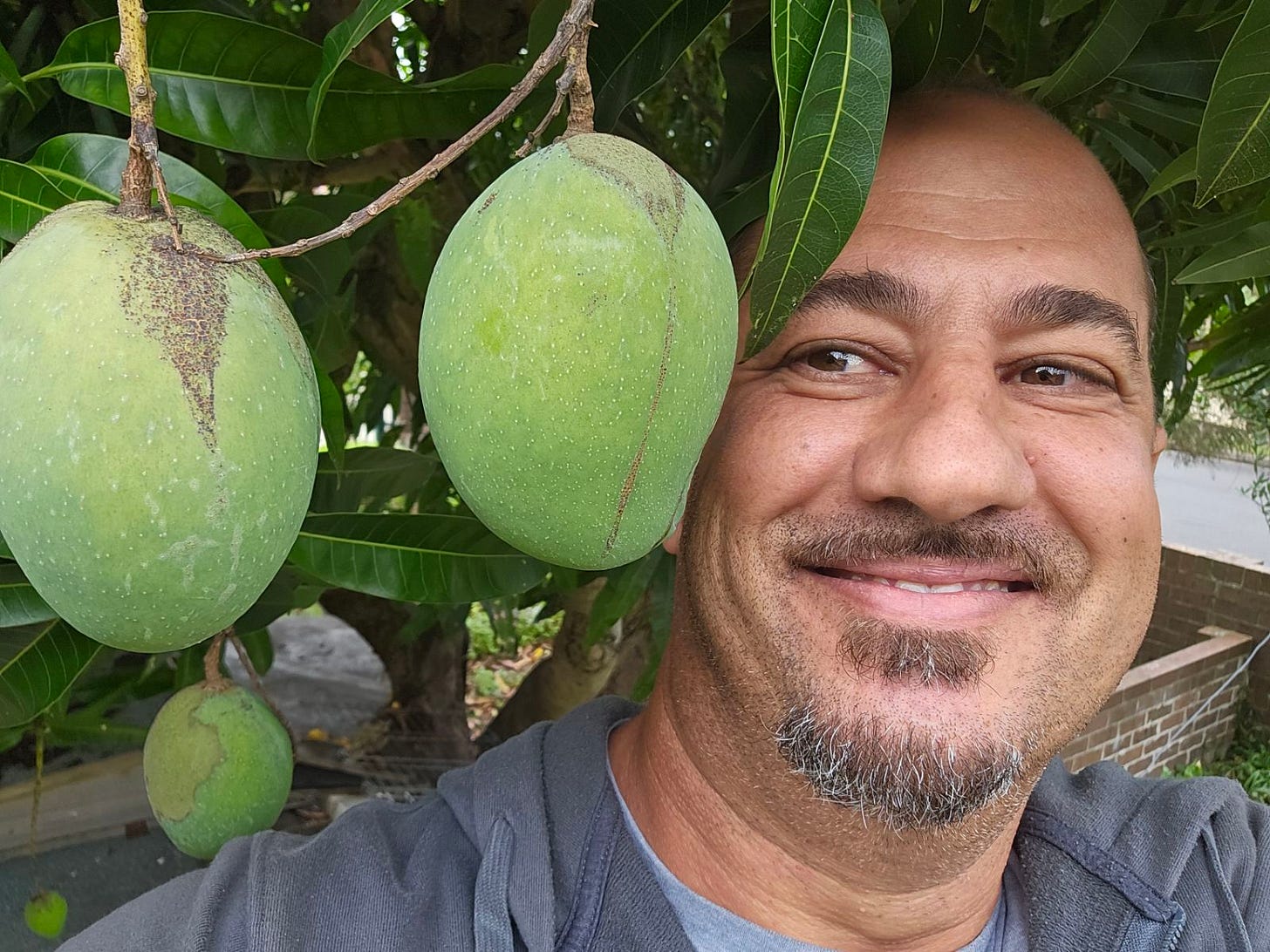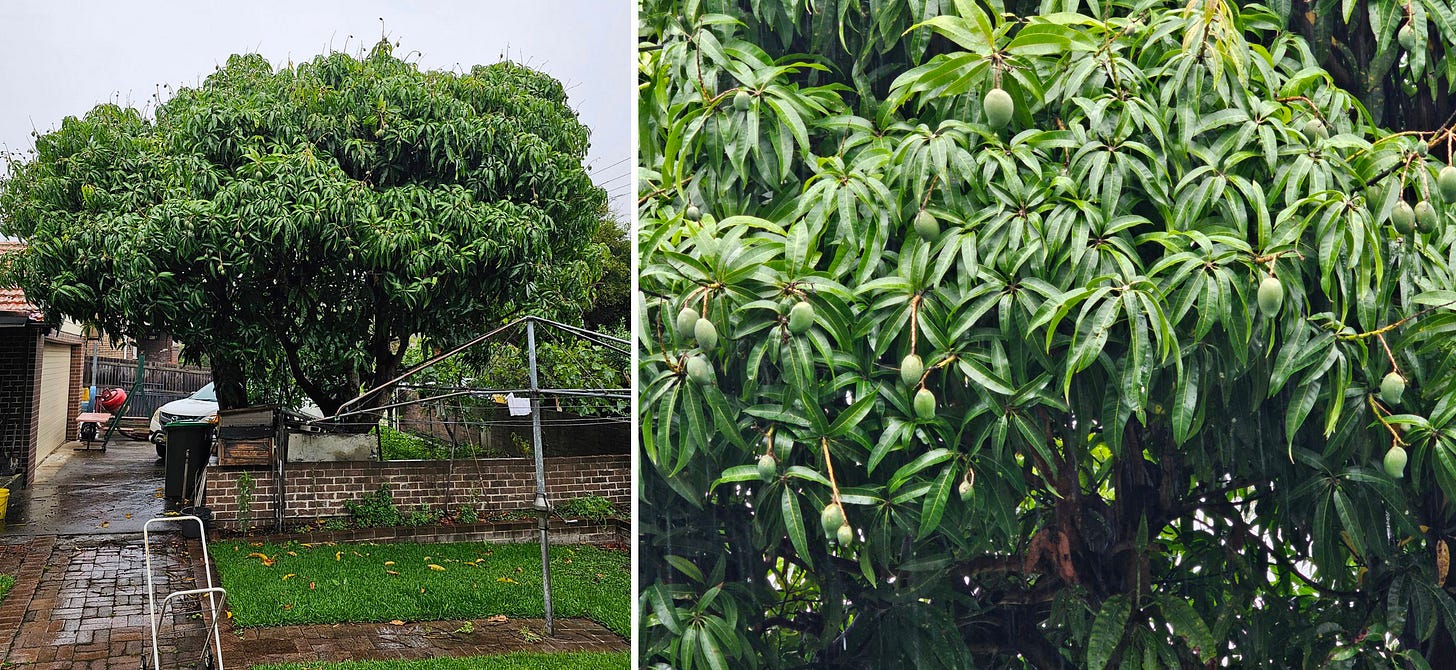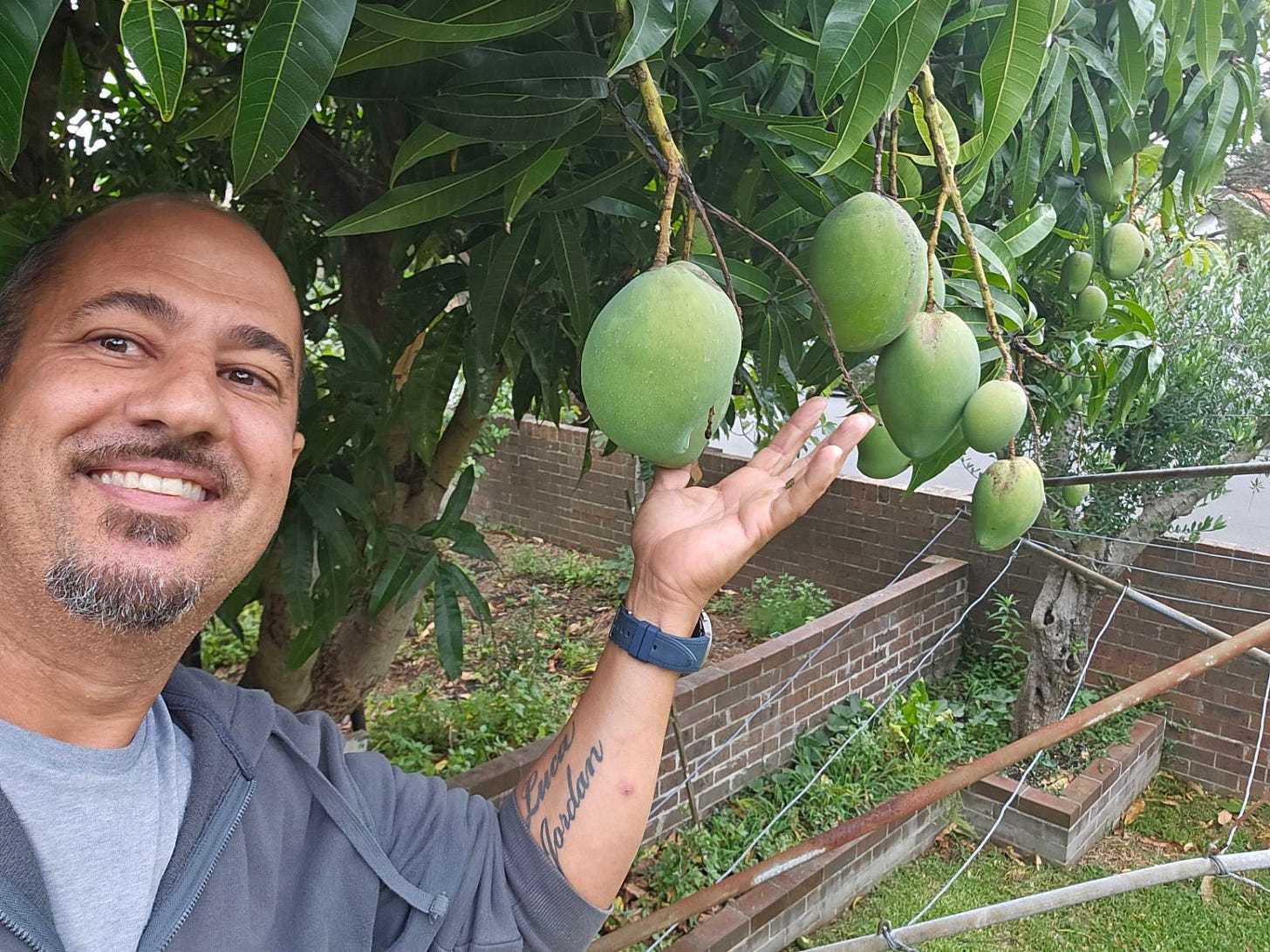He cut the ends off with a hacksaw: Carmelo's magical mango trees
Happy New Year with a shot of joy from a morning coffee hero
I never write about bus driving: I don’t want to mess with work.
But there’s a thing of wonder I’m going to share: Carmelo the coffee man.
At 5.30am every weekday, this Blacktown barista brings salvation to the depot. When you’re struggling, Carmelo gets you through the front door.
It’s not just the hot drinks - though they are good. It’s that he remembers everyone, what they order, who they are, and he’s always friendly, neutral, calm and discrete.
It turns out that Carmelo Totaro, 48, has a green thumb. He grows things: tomatoes, grapes, strawberries, mulberries, figs, dwarf baby cucumbers.
But the most amazing thing he grew is a pair of giant mango trees.
I thought it impossible to grow edible mangoes this far south. I asked the Australian Mango Industry Association and they confirmed mangoes are a tropical fruit that prefer a warmer climate.
And yet here is Carmelo with his astonishing mangoes.
The trees produce Kensington Prides. Although they stay green and never turn gold, they taste exactly the same as the ones you pay $5 for at the supermarket.
For many years his dad would take the seed from a mango and put it in the ground and water it - and nothing would happen, Carmelo said.
But one time he dug up a mango pit that didn’t grow, and saw it had cracked open and inside was a little seed.
So Carmelo, age 10, took the stone from the next mango he ate, cut off both ends with a hacksaw and planted it.
That’s genius. It worked.
Now there are two enormous fruiting trees that shade the house where he grew up in Haberfield, in Sydney’s inner-west. His dad lives there still though Carmelo has long since moved away and made a family of his own.
Kensington Prides produce seeds that are true-to-type, so they are good replicas of the parent fruit.
The trees have grown higher than the roof and have to be cut back all the time.
“There’ve been times we’ve had over 300 mangoes,” Carmelo said.
“The funny thing is they don’t go yellow, they just go green and soften when they’re ripe, then go black when they get too old.”
“They’re good-tasting mangoes when they’re soft and green. They’re really sweet.”
According to a NSW Department of Primary Industries (DPI) factsheet from 2004, NSW only accounts for 3 percent of Australian mango production as it’s too cold here - most fruit is grown in tropical Queensland, and around Darwin and Katherine in the Northern Territory.
The DPI factsheet has a clue to why Carmelo’s mangoes stay green - commercial growers in NSW use the hydrocarbon gas ethylene to ripen the fruit, producing the golden skin colour.
The DPI says cold climates in NSW cause poor flowering and lack of fruit.
But this hasn’t hurt Carmelo’s trees: they are nearly 40 years old, strong and established.
Carmelo says some years the storms knock off the flowers or birds eat the fruit so you get less, but there are so many mangoes that the birds just can’t find them all.
Genius, green thumb and excellent barista Carmelo is on holidays in Fiji having adventures with waterfalls. He gets back on January 15.
Update: 12 January - fixed a spelling error and tinkered with the headline. No stealth editing on this substack 😀








Yes please 🥭
Thank you for sharing such a lovely, positive story.
...I was just feeling like I couldn't take any more news about the bad stuff right now!